How and when to plant tulip bulbs: expert advice on growing these stunning spring flowers
Our top tips on how and when to plant tulip bulbs will help you create an eye-catching display

Holly Crossley
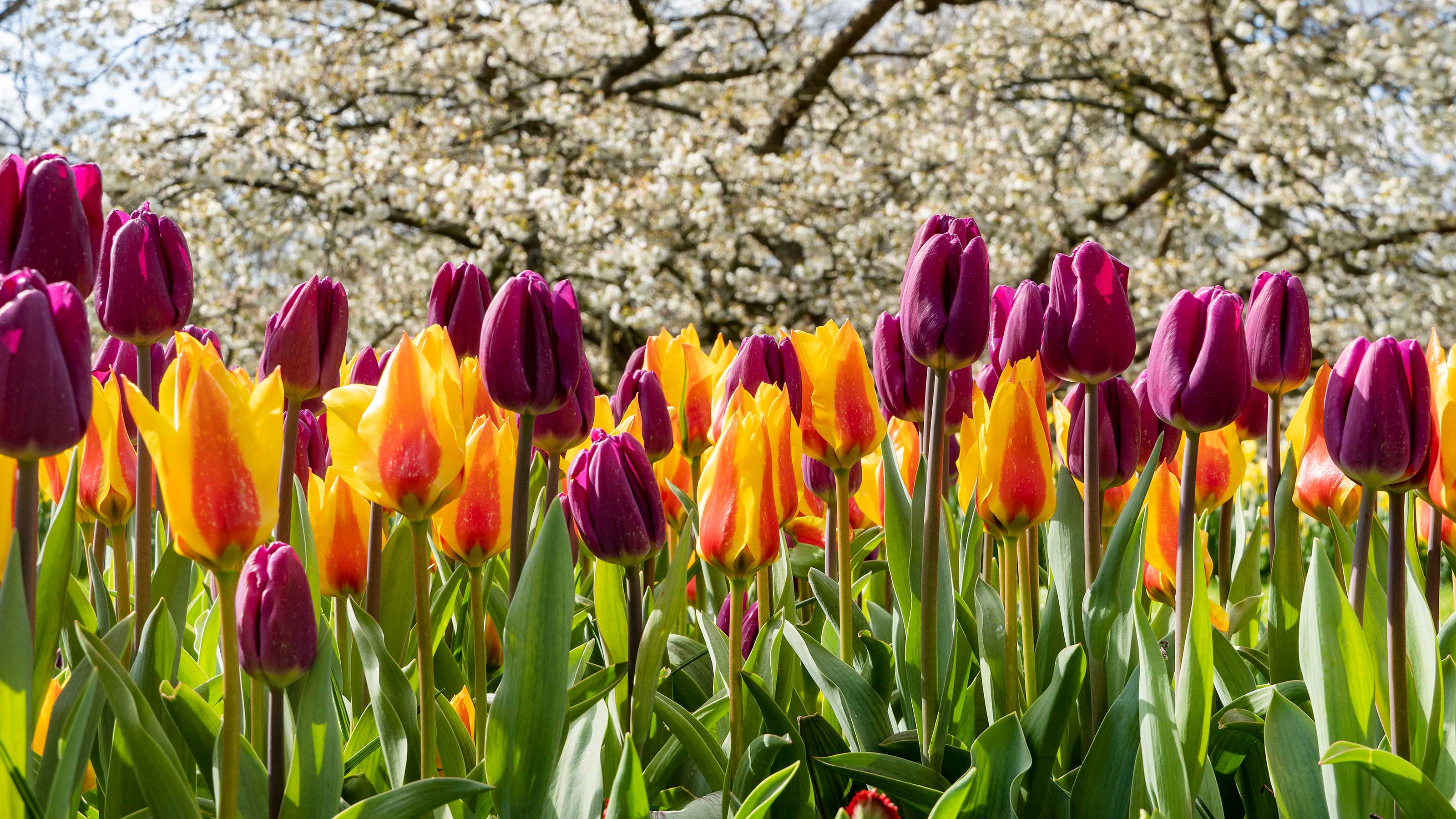
When cooler weather is on the way, it's time to consider how and when to plant tulip bulbs – one of the best spring flowers out there.
With their glossy petals and vibrant colors, tulips bring so much to the garden. These wonderfully versatile plants are happy in both pots and borders. And, some can even be naturalized in lawns and rockeries to create a stunning display alongside snowdrops, narcissi and other spring delights. When it comes to planting bulbs, tulips should definitely be on your list this fall.
To help you get started, we've brought together tons of top tips on when and how to plant tulip bulbs, including advice for container growing and what to do with them when they've finished flowering.
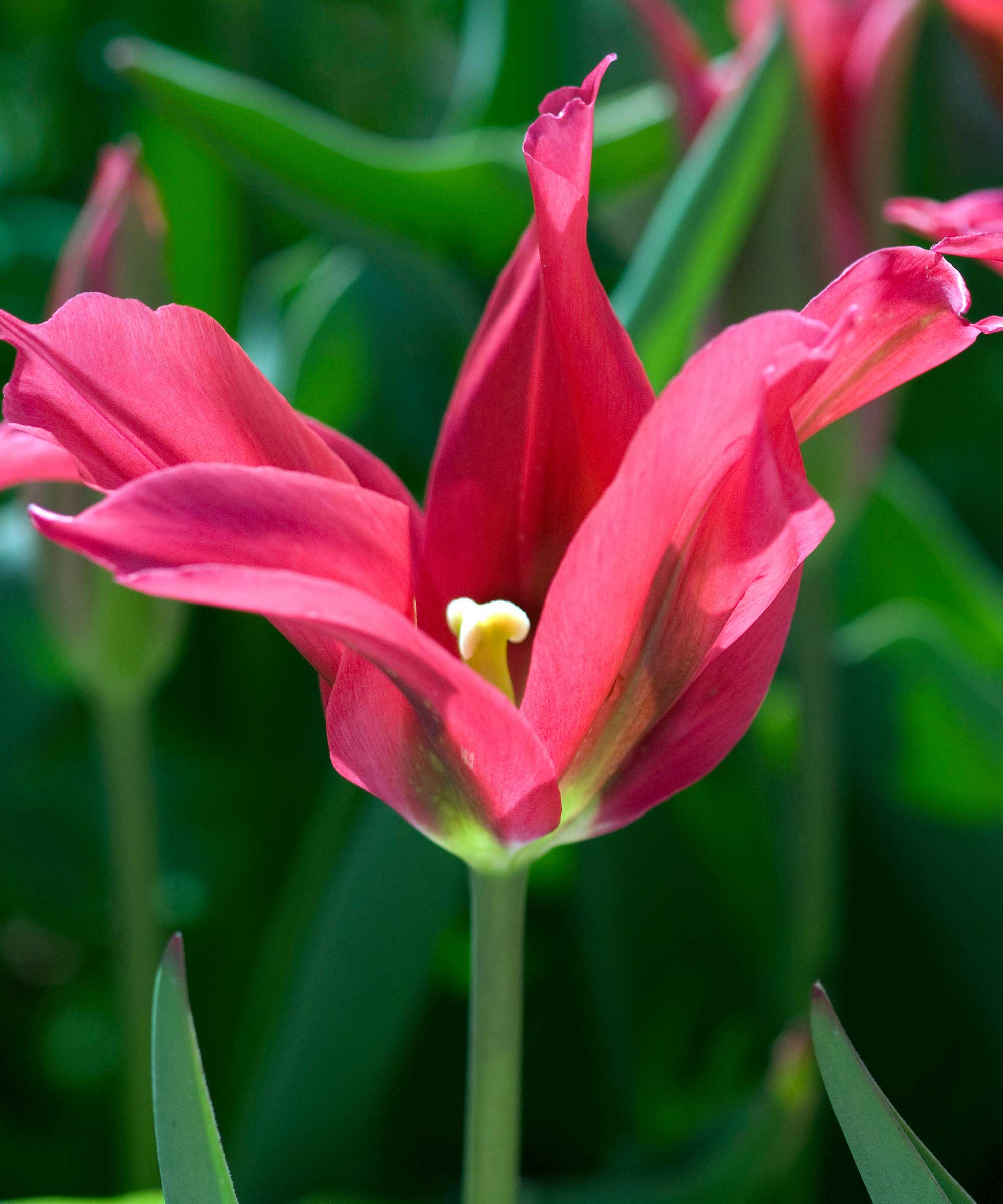
When to plant tulip bulbs
First of all, you'll need to know when to plant tulip bulbs.
You will see tulip bulbs on sale online at the likes of Amazon, as well as in supermarkets and garden centers, from early fall. But, the best time to plant them out is later in the season, or even in early winter. If you've already learned how to plant daffodil bulbs, you might think this is quite late. It's true that tulips are planted later than other spring bulbs, and there is a good reason for it.
Tulip bulbs go in later as this helps guard them against a disease called tulip fire (also known as tulip blight). Tulip fire rots the bulbs and causes the leaves to develop a twisted, scorched look.
Gardening expert Monty Don considers November as the ideal tulip-planting time for the UK. 'This is, to my mind, the most important and best job of the month,' he says. 'It is actually something that can be done at any time between now and Christmas, although the earlier they get into the ground, the earlier they will flower.'
It's absolutely fine to buy the types of tulips you want as soon as you see them each year (you don't want to miss out on the perfect buy, after all). But, if it's still a bit early to plant them, store them in a cool, dark place until it's time.
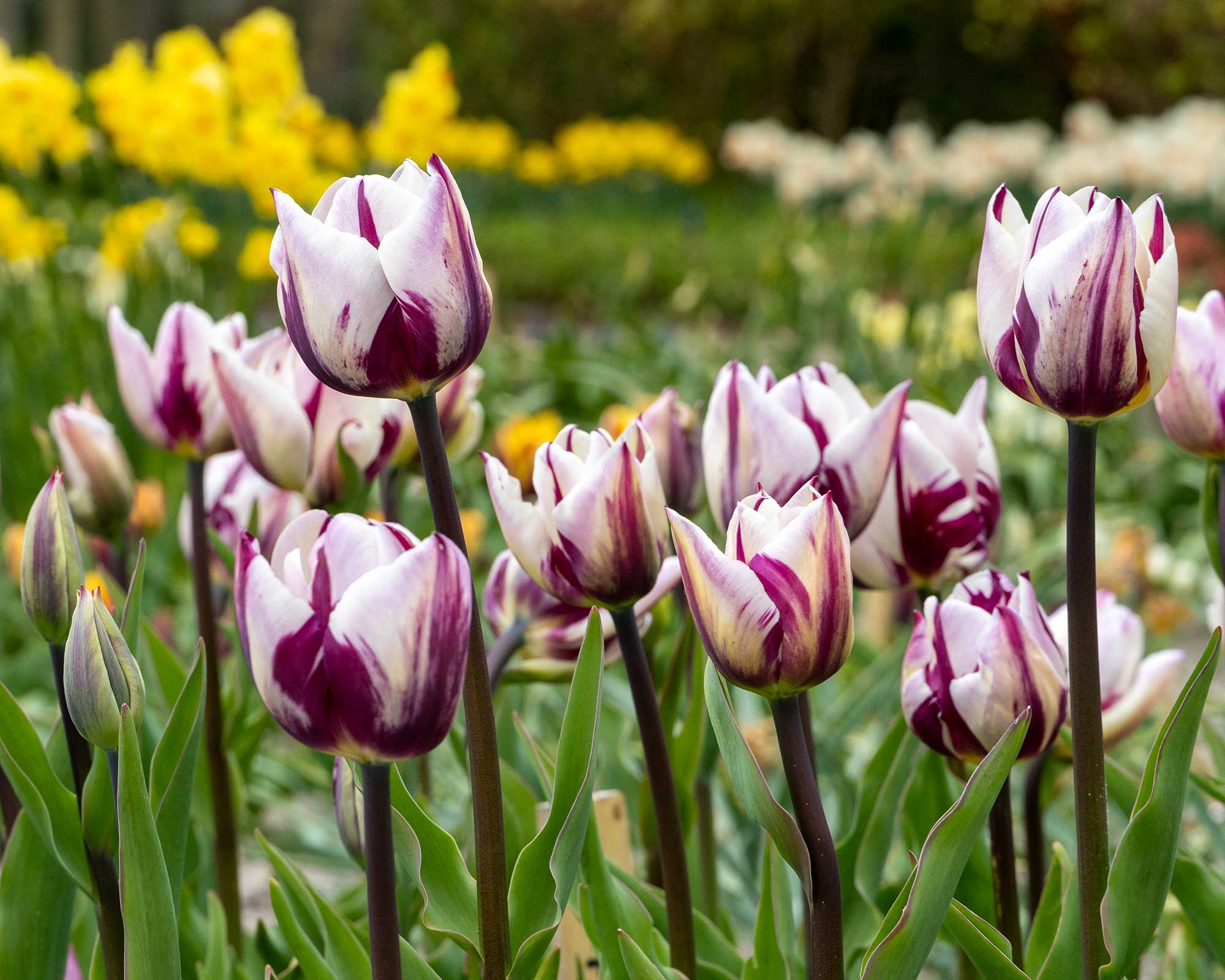
How do you plant tulip bulbs in pots?
Tulips are a perfect choice if you're planning a spring container. There is nothing like a bright display of them at the front of the house or on a patio before the summer blooms have sprung into life.
- Pick a container with plenty of drainage holes in the bottom.
- Use a multi-purpose compost with a couple of handfuls of horticultural grit. 'Work 4oz (112g) per m2 of bone meal into the compost,' suggests John Negus, a gardening expert from Amateur Gardening. 'This breaks down into root-promoting phosphates that will nourish growth in spring.'
- Wearing gardening gloves (tulip bulbs can irritate the skin), plant the bulbs twice their own depth, and around one bulb's width apart – they should never be touching. A generously-planted pot will create more impact.
- If the weather is dry, water the pots until just moist.
You can plant them by themselves, or in a bulb lasagne with other, smaller bulb plants, says the Amateur Gardening experts. 'This will provide a range of heights, colors and floral interest to last throughout the spring.'
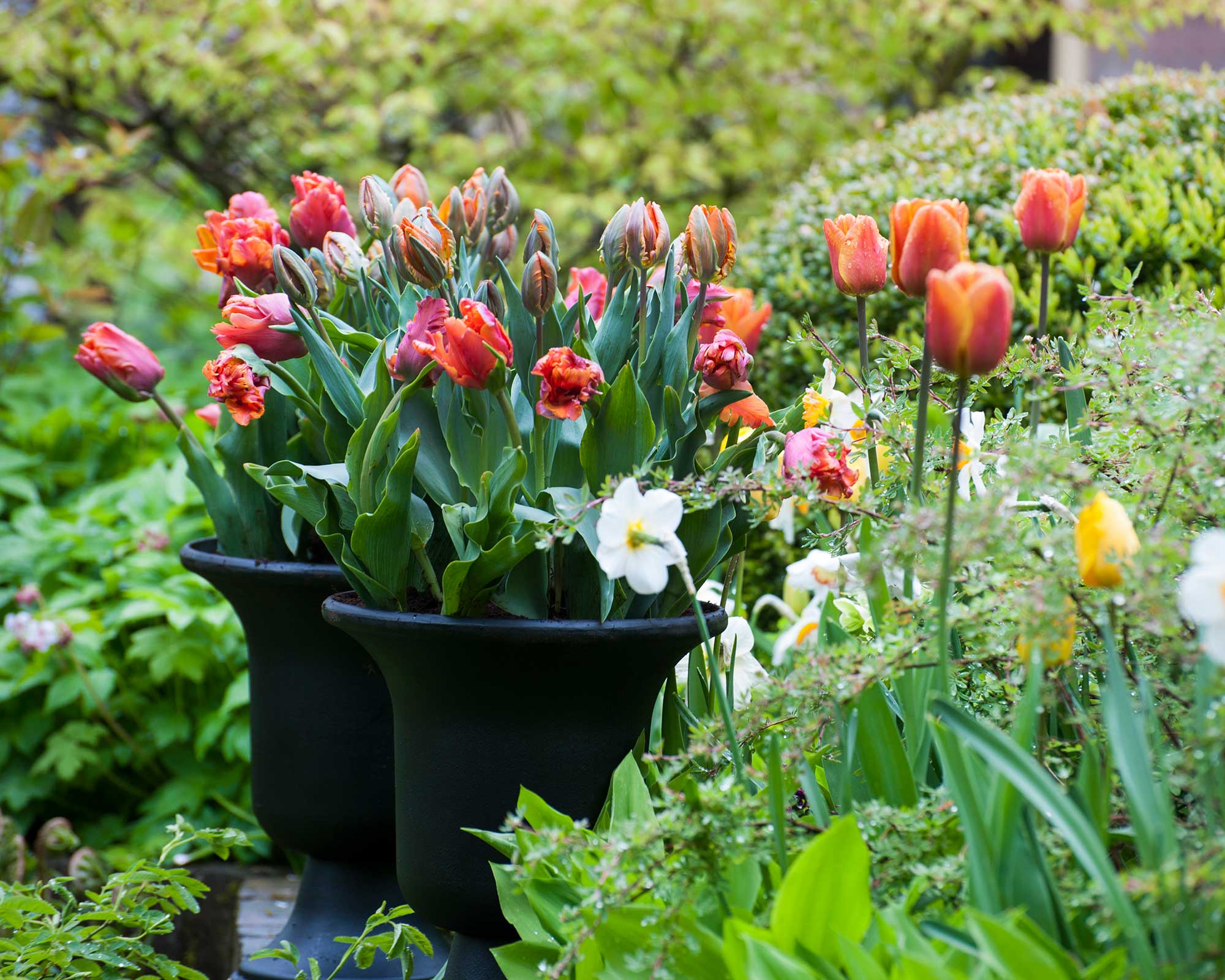
How do you plant tulip bulbs in the ground?
Tulips look wonderful in flower beds, both en masse and tucked alongside perennials and other spring bulbs.
- 'Plant bulbs in good, well-drained, neutral to alkaline soil in a sunny position,' advises Anne Swithinbank, a gardening expert of Amateur Gardening. They dislike heavy soil that is very wet as it encourages rotting, so if your soil is like this, dig in lots of well-rotted organic matter or coarse gravel before planting.
- Planting in groups will create more impact. Aim for at least six or seven, more if you have the space, to create a drift of color. You can plant each bulb as closely as 2in (around 5cm) apart. However, Anne prefers to enjoy individual blooms in their own space rather than going for a 'coloring in' effect. She advises planting them at least 4in (10cm) apart, but preferably 6in (15cm) or more. Choose whichever style you prefer, just remember to wear gloves when handling the bulbs to avoid skin irritation.
- A bulb planter tool, available on Amazon, is useful if you are putting tulips into a grassy area. It works like an apple corer, removing a neat plug from the ground. Alternatively, dig larger holes in your flower beds to plant your bulbs in clusters. Plant each bulb three times its own depth – 'This protects from cold and helps them enjoy moisture during spring,' explains Anne. If you're planning for them to be permanent rather than digging them up after they have flowered, Monty Don advises planting tulip bulbs as deep as you can. 'I'll often use a crowbar to make a hole 12 inches or more deep – and the deeper they are the stronger and straighter the stem will be,' he says.
- Make sure you plant them the right way around, with the pointed side facing upwards.
- Cover the planted bulbs with gritty soil and water lightly if the ground is dry.
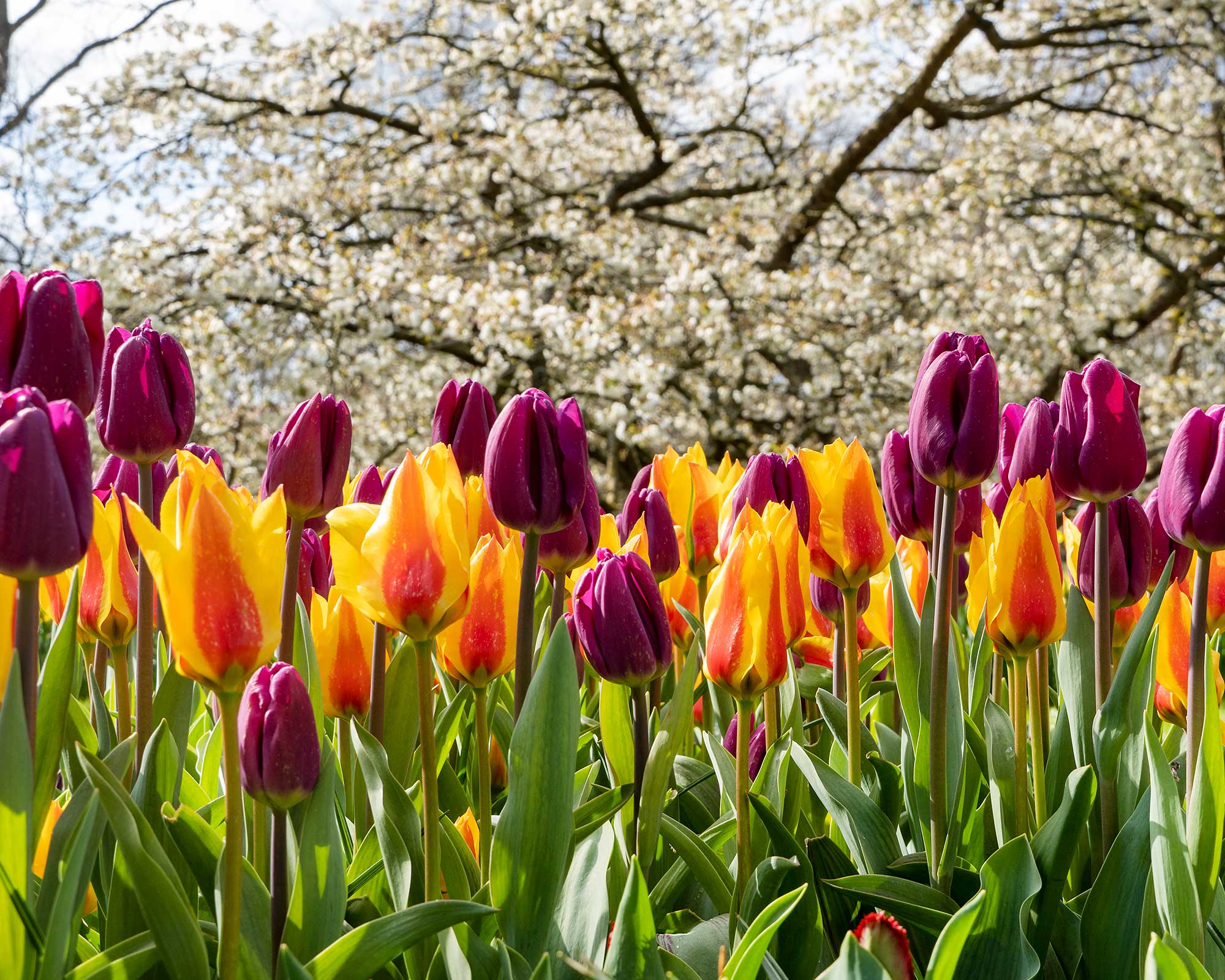
Should you soak tulip bulbs before planting them?
Some gardeners choose to soak some of their spring bulbs – particularly anemones – in water for a few hours before planting. However, this isn't really necessary when planting tulips – in fact, it can encourage the bulbs to rot.
If the soil feels dry, you can always lightly water over the area once they're planted, just avoid overdoing it and waterlogging the soil.
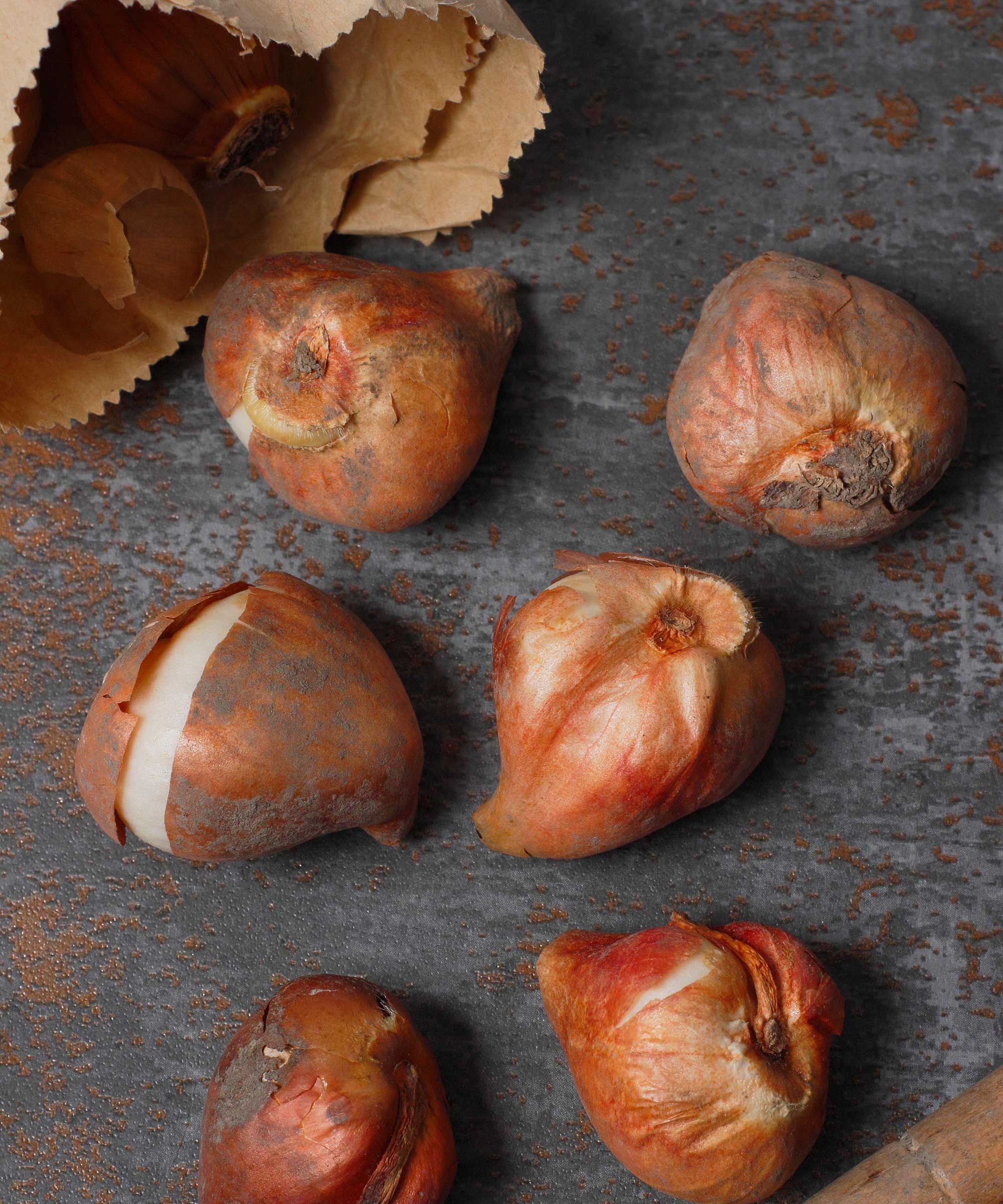
When do tulips flower?
Some tulips flower in mid-spring and some in late spring, so it is worth checking the packaging to establish exactly when they will appear.
Early bloomers include ‘Foxtrot’, which is a double-flowered delight in candy floss pink that's great for pots. You could also try 'Orange Emperor', which has large, tangerine-colored petals. It's one of the earliest flowering of them all. If you're looking for other early spring flowers, it's worth learning how to plant crocus bulbs, too.
Tulips that bloom later in the season include the graceful, all-white 'Mount Tacoma' (a double bloomer); 'Blue Heron', which has dramatic, fringed petals in a deep purple with paler edges; and 'West Point' – a bright yellow, lily-flowered variety.
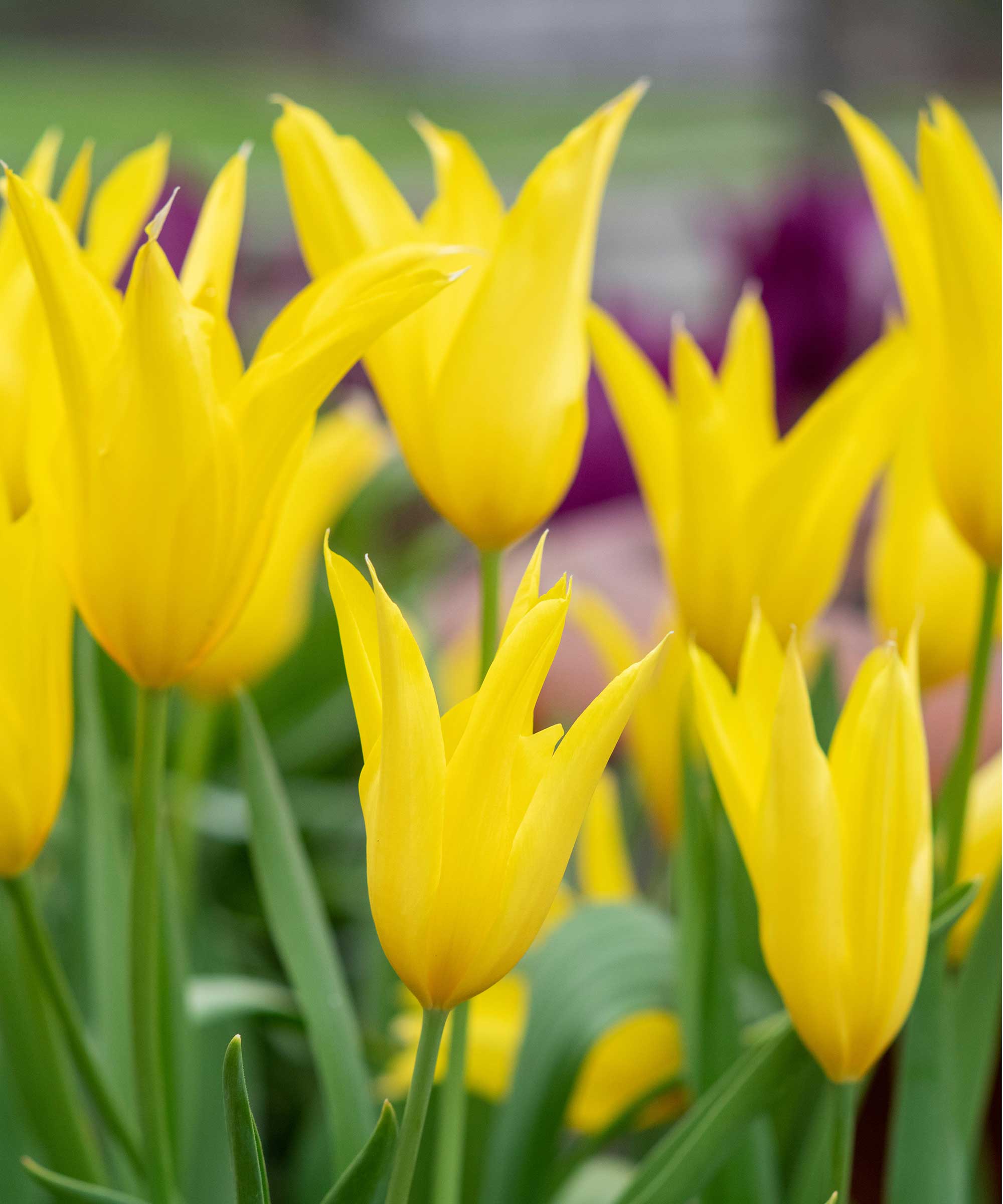
What are some common pest problems for tulips?
Squirrels are prone to digging up bulbs, as are some other small pests. Put preventative measures in after you've planted your tulips to deter them, such as covering pots with hardware cloth.
If you're planting your bulbs in pots, you can also discourage slugs by adding a layer of horticultural grit on top of the soil. It looks smart, too.
Aphids can also be a nuisance, but there are plenty of ways to deter them.
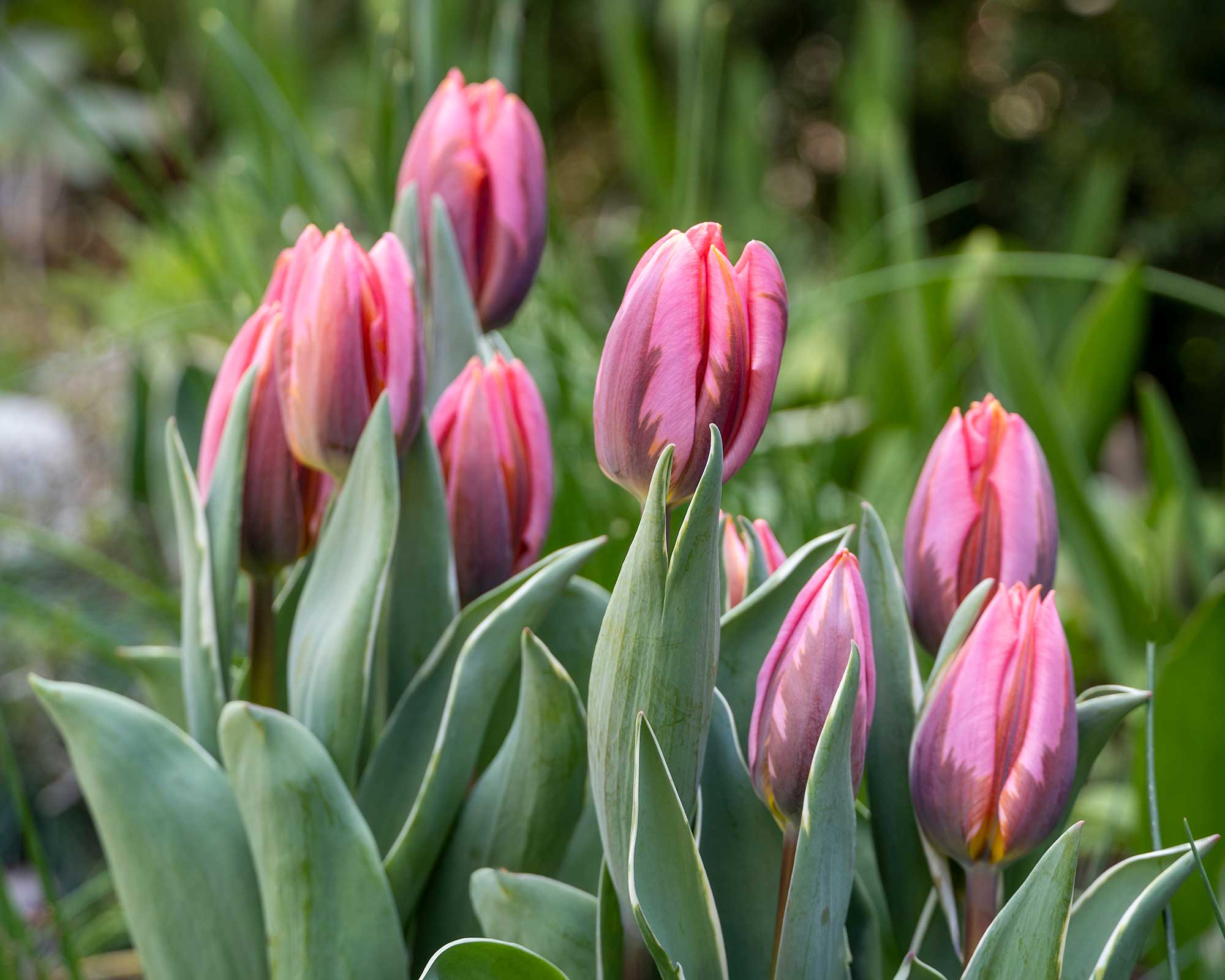
Should you feed tulips?
Fertilizing plants is useful for giving them a boost. If you feed tulips, it will encourage strong growth and flowering the following year, so it's worth doing if you plan to keep the bulbs.
According to the RHS, it's best to feed tulip bulbs once they are in growth in spring. Do so weekly, with a potassium-rich liquid fertilizer – the type you'd use to feed tomatoes. Stop fertilizing the plants once the leaves have yellowed and died back.
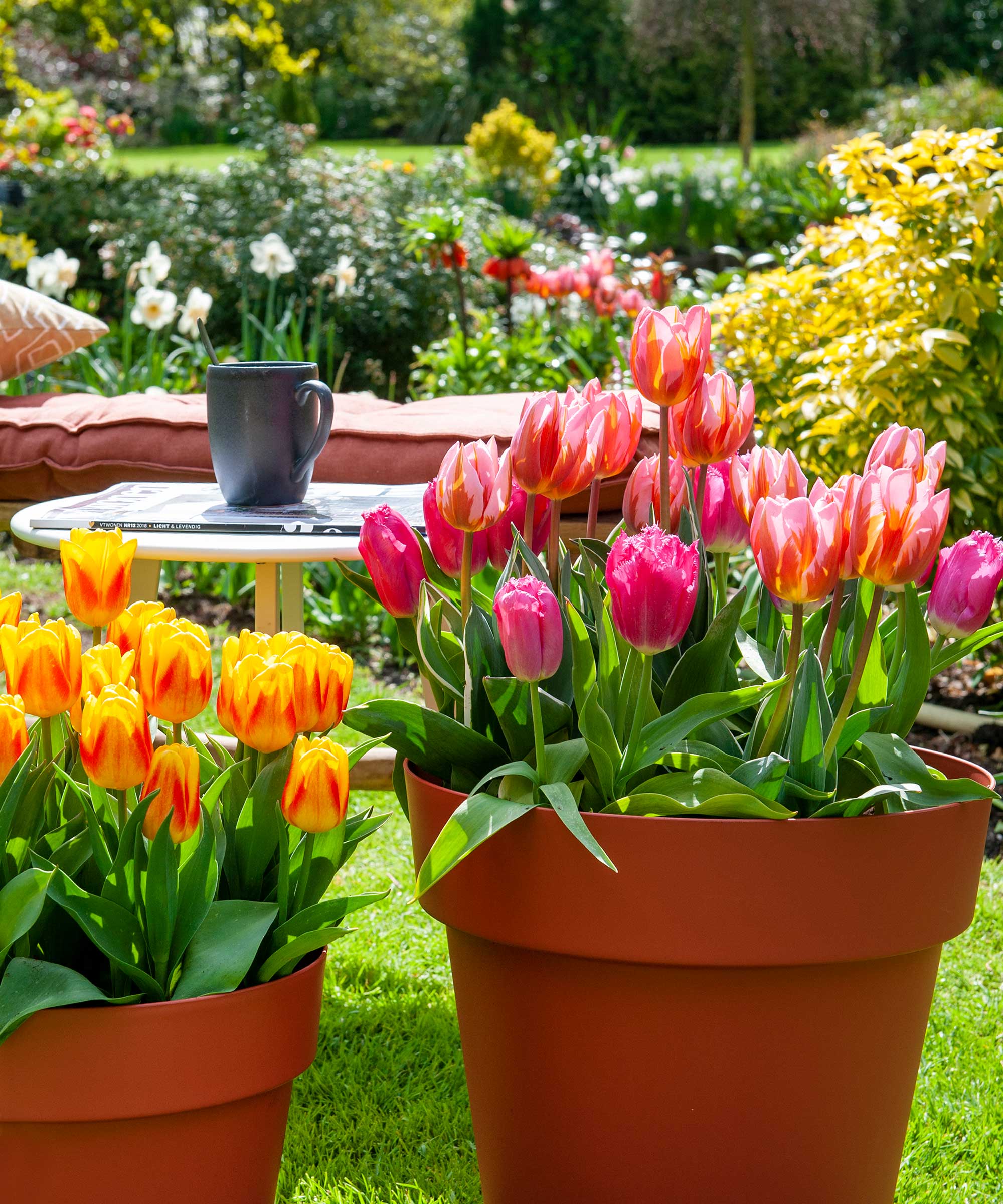
Can you 'force' tulip bulbs indoors?
Most people think of hyacinths or daffodils as prime picks for indoor bulb forcing. However, you can try the technique with tulip bulbs, too, for early blooms that'll brighten up your home.
Some varieties are better than others for this; generally the 'Species', 'Early' and 'Triumph' types. The RHS recommends trying Single Early 'Apricot Beauty' which has peachy-colored, cup-shaped flowers, or 'Attila', a Triumph tulip in a reddish-purple tone.
- Start by buying your bulbs in early fall and putting them somewhere cold but frost-free for around 12 weeks, such as in a garage or cold frame.
- Then, while wearing gloves, plant them in pots, adding plenty of grit to the soil. Water lightly, cover them with a black bin bag, and put them somewhere dark and cool for six weeks or so. Check on them periodically, watering if the soil feels dry.
- When you see green shoots appearing, remove the cover and place them somewhere bright and warm where they will flower after around three weeks.
For a more unique look, you can try growing your tulip bulbs in special bulb forcing vases (available on Amazon) instead, which don't require compost. Just ensure that the water in the bottom doesn't touch the bulb.
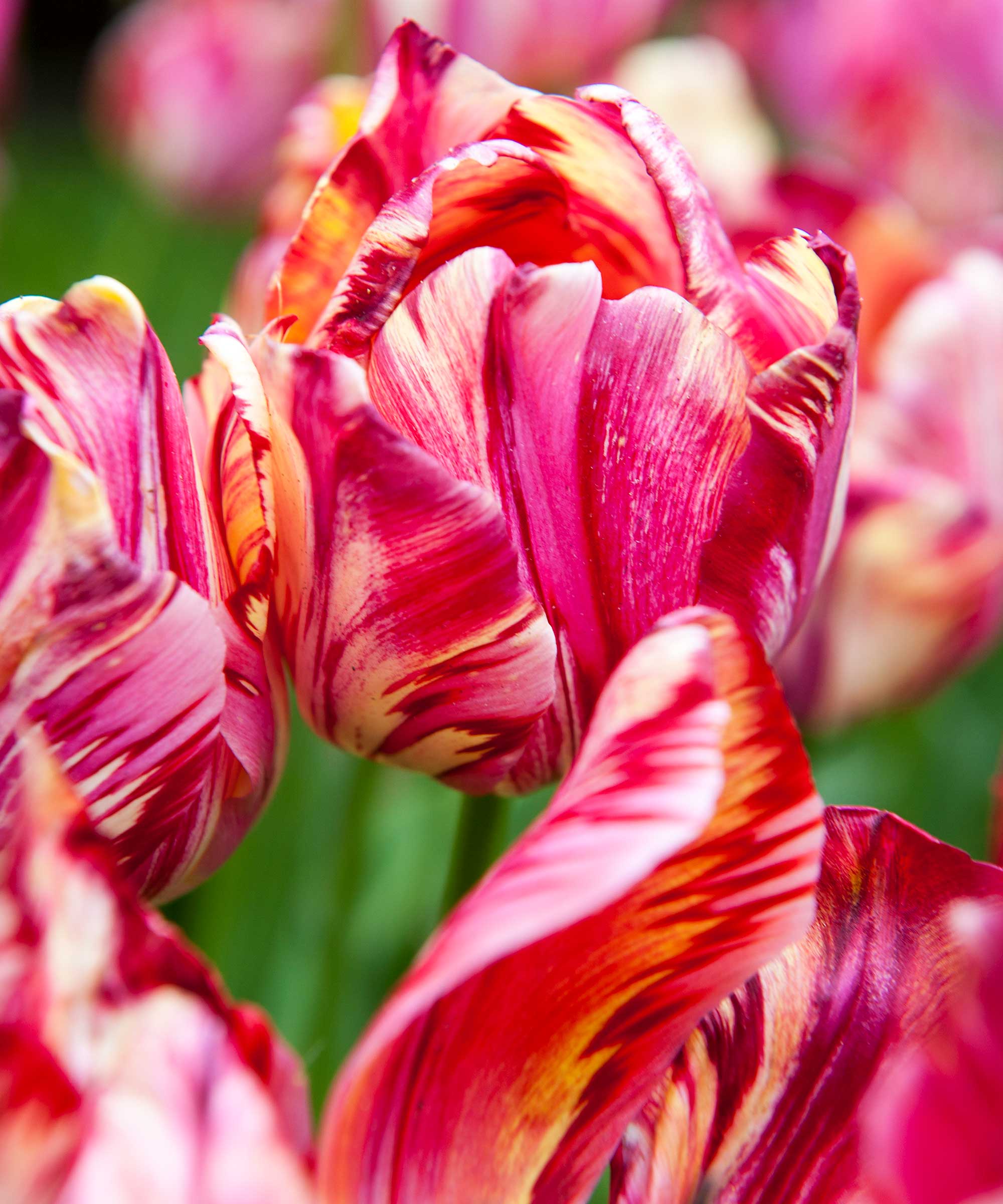
What should you do with tulip bulbs after they've finished flowering?
'Whereas daffodils suit our [UK] climate and naturalize well (returning to flower and bulking up year after year), tulips are another story,' says Anne Swithinbank of Amateur Gardening. 'They usually dwindle with perhaps a few flowering again, or they might miss a few years and bloom when they feel like it.'
Deadheading will help and many gardeners lift bulbs after the foliage has died back, dry them out, and next autumn, plant in good soil for cutting, Anne continues.
Some gardeners, including expert grower Sarah Raven, simply leave them in the ground, although generally, the first year's display is always the best. However, 'You might come across good naturalizers,' says Anne. 'For example, our original bulbs of the cultivar "Fontainebleau" have flowered again and again, making decent clumps.'
Whichever method you prefer, the chances are that you will need to top up your tulip bulbs each year to ensure a full and impressive display.
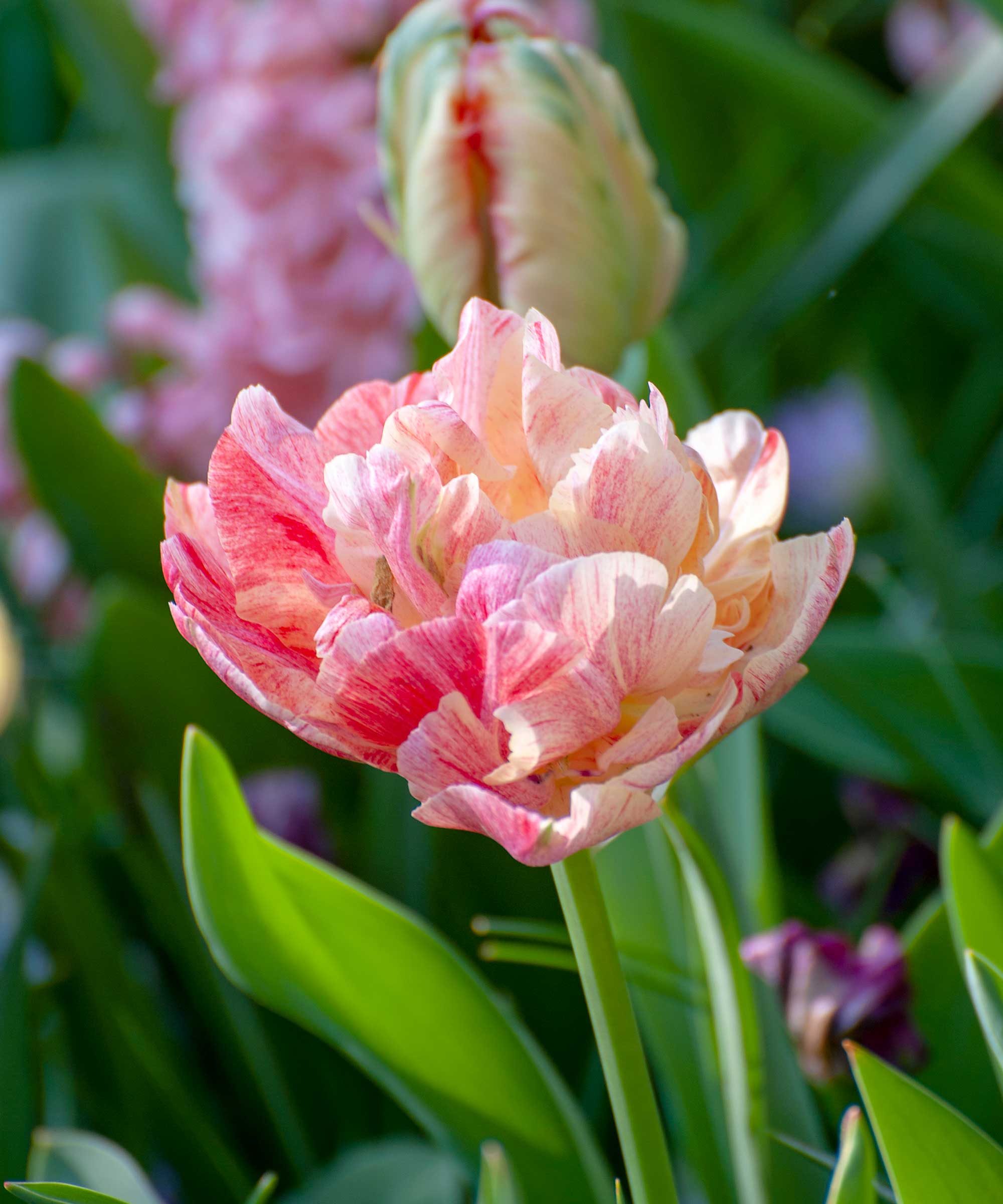
How do tulips spread?
As mentioned above, some tulips can spread – otherwise known as naturalizing. There are two ways they can do this.
'Tulips can spread by seed, but take four to seven years to reach flowering size,' says John. 'Seed heads can appear in summer once flowering is long finished, and the pods split to reveal papery seeds that can be transported on the breeze.'
If you want to prevent this from happening, remove the flower stalk once the petals have dropped, thus preventing the seeds from developing.
Some tulips are so highly bred they no longer have the ability to produce seed, John continues. However, they may produce offsets, or bulblets, which can then flower after a couple of years if left in the ground.
'If tulips appear where you don’t want them, simply dig up the bulbs and either dispose of them or replant elsewhere,' says John. 'If they are among other flowers and can’t be dug up, remove the leaves and stalks to cut off the food supply to the bulb and they will eventually stop growing.'
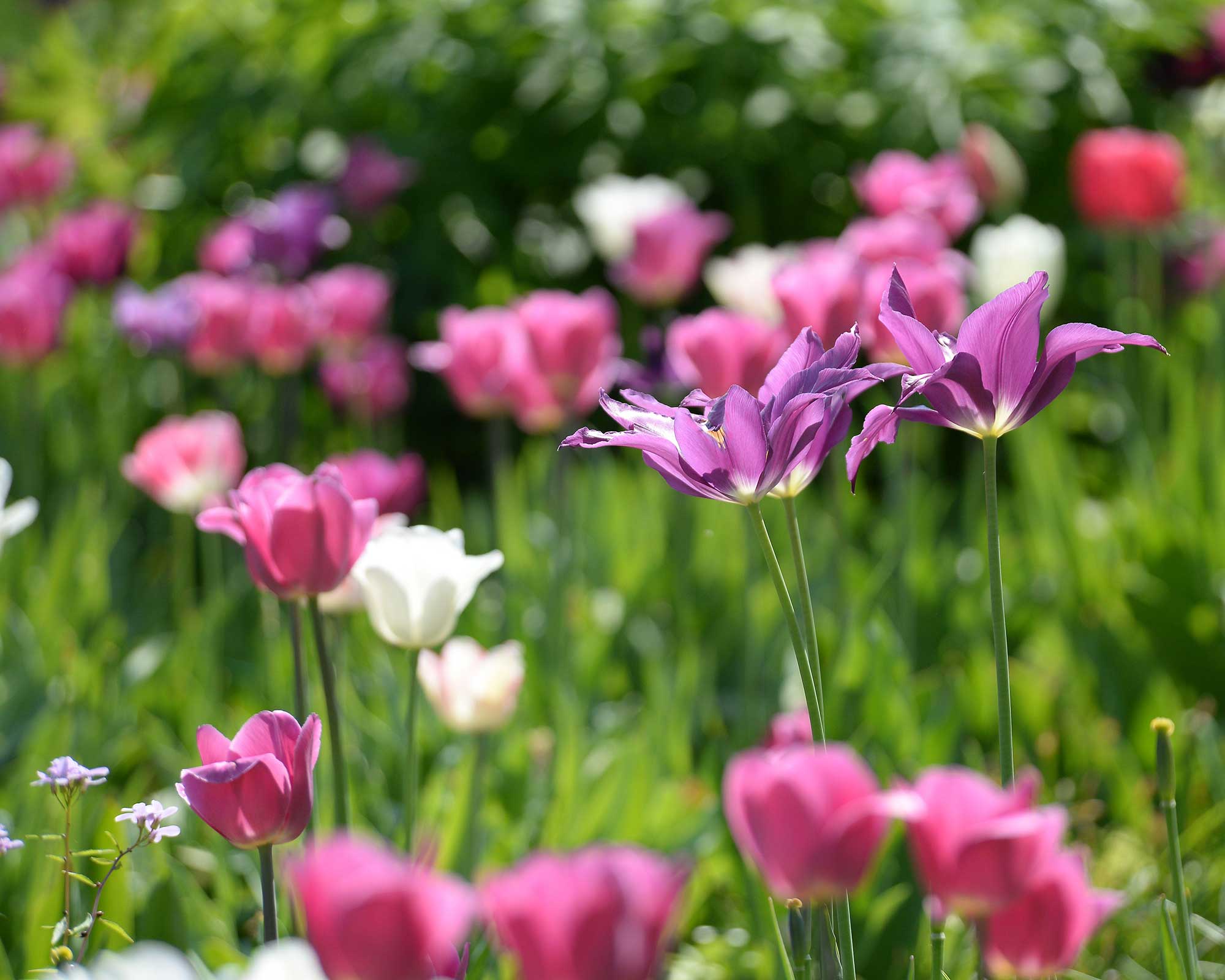
How do you keep cut tulips in a vase?
Although tulips make a pretty cutting garden flower, they are prone to flopping in the vase. Trim the stems diagonally by 1-2in (3-5cm) and put them in water as quickly as you can after cutting.
Keep them out of direct sunlight and away from radiators. If you want a very straight stem, try wrapping the flowers tightly in a cone of newspaper. Leave in water overnight, and when unwrapped, they should stay upright.
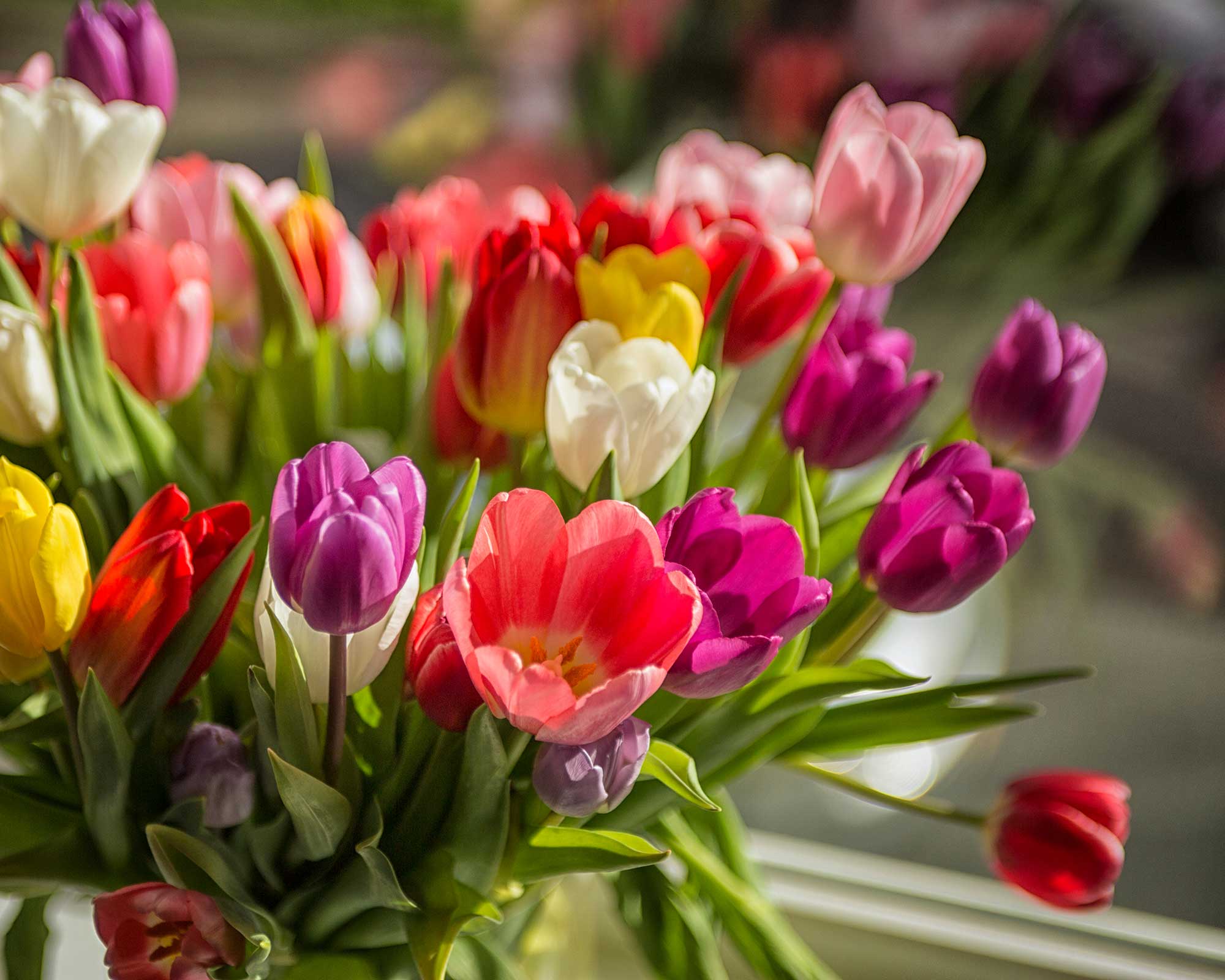
Where to buy tulip bulbs
Now you know how and when to plant tulip bulbs, you're probably eager to buy some of your own. While they are generally available in garden centers from late summer to fall, you can also buy them online for extra convenience.
We've rounded up a list of quicklinks to help start your search.
Where to buy tulip bulbs in the US:
- Shop tulip bulbs at Amazon
- Shop tulip bulbs at Burpee
- Shop tulip bulbs at Walmart
- Shop tulip bulbs at Dutch Grown
- Shop tulip bulbs at Nature Hills
Where to buy tulip bulbs in the UK:

An experienced freelance journalist, editor and columnist writing for national magazines and websites, Fiona now specialises in gardens. She enjoys finding and writing about all kinds, from the tiniest town plots to impressively designed ones in grand country houses.
- Holly CrossleyActing Deputy Editor
